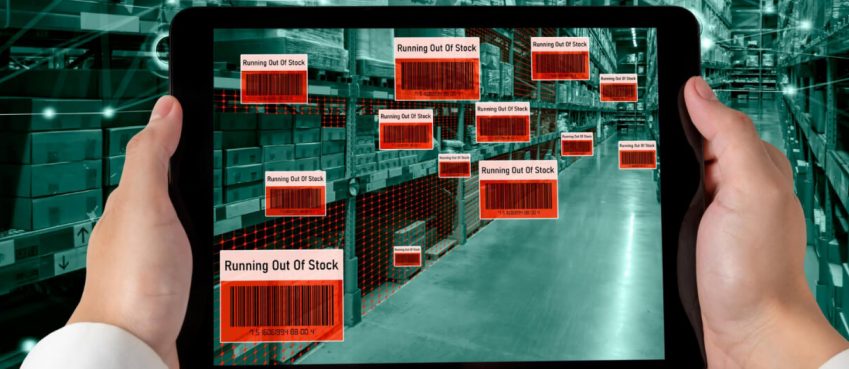
Even though people may have been forced to stay indoors due to the 2020 pandemic they still went shopping. In a wave that caused a reported 10-year jump in online buying technologies, e-commerce became de rigueur. Businesses that kept up were able to stay afloat and ride unprecedented Black Friday weekend waves.
How Companies Helping E-Commerce keep a Step Ahead of Customer Expectations
Companies of all sizes continue to be attracted to e-commerce. E-commerce is a popular option for all businesses, even those who prefer brick-and-mortar shopping. However, not all companies have been able to keep up with the demands and challenges of digital B2C selling.
What is the biggest stumbling block? Although there are many stumbling blocks, most of them point to the same thing: E-commerce is not like running a traditional shop. E-commerce has its own unique challenges, from shipping to support. Some businesses simply don’t have enough infrastructure to handle the complexities.
Position yourself as a partner to e-commerce suppliers
Many startups and established companies have joined the fray. Many players are looking to be partners with e-commerce suppliers of any size, and they’re succeeding. A few businesses are standouts in helping businesses explore the eCommerce marketplace in key areas.
1. Manufacturing and Shipping
The supply chain is a key factor in gaining traction on e-commerce. Many company leaders who began in traditional commerce don’t know how to effectively deal with eCommerce logistics.
Where will the product be kept, for example? What will be the shipping and packaging locations? What systems will keep track of the entire process from start to finish? These are all problems that Smart Warehousing aims to solve.
Smart Warehousing now has several locations in the United States and can play the role of a 3PL (3rd-party logistics) partner. It provides complete fulfillment to simplify the buyer-seller transaction.
Smart Warehousing not only holds merchandise but also tracks and ships all orders on behalf of clients. This results in a smooth, transparent flow that eliminates the supply chain pain.
Also read: Everything You Need To Know About Magic School AI
2. Advertising and Marketing
Many e-commerce partners are not small or medium-sized businesses. Google is a good example. The giant search engine got major e-commerce buzz recently by democratizing Google Shopping. Now, e-commerce businesses can link their Shopify accounts to Google for free. This allows them to be highly visible on the most popular search engine.
Google’s free shopping listings have helped increase the popularity of its platform but it is still very young. It could be an opportunity for businesses to explore this partnership at a low cost.
Google stated that it plans to take the spotlight from Amazon by launching its model. Google’s success will be determined over time. It’s still worth looking at because it’s an excellent way to attract more customers to a product.
Also read: Best Online Courses to get highest paid in 2021
3. Robots and Automation
Warehouse work is notorious for its tedium and waste. Human workers are limited in their ability to run fast, stock shelves quickly, and work for more than a few hours at once. Locus Robotics is here to help.
Locus Robotics makes it possible for manufacturers to have robots custom-built for use in their warehouse environments. These bots can perform tasks such as transporting goods from shelf to shelf or acting as an extra pair of eyes for workers. Locus Robotics research shows that clients who have used them can increase productivity up to threefold.
E-commerce companies could benefit from an increase in productivity. It is easy to see why. Though e-commerce may be lucrative, its margins can be razor-thin. Every penny counts when everyone is competing online for the same consumers. Robots can be used to help reduce costs, without the need for a reduction in payroll.
4. Online Platform Design and Deployment
It’s important to remember when talking about eCommerce that many companies start from scratch. They don’t know how to even get into the online shopping world. SCI Commerce was able to help small businesses in Asia with their problems with e-commerce.
SCI was founded by Joseph Liu, an innovator in e-commerce solutions. Liu secured some highly-powered investors to help SCI grow. Two former employees of Alibaba are part of the investor group.
Liu hopes that SCI will eventually be the Shopify of the Asia-Pacific region. SCI has a long history of working with top brands but will be focusing on smaller markets. This will allow it to help start-ups get more attention online and avoid roadblocks.
Also read: [New] Top 10 Opus Clip Alternatives To Create Viral Short Clips
5. Coaching and Mentoring
One of the most overlooked aspects of starting an e-commerce business is education. FedEx hopes to simplify teams to learn about online sales through its FedEx E-Commerce Learning Lab.
The Learning Lab’s purpose is to be an incubator for its members, particularly those from historically underrepresented groups. FedEx will not only support mentoring but will also give $2,000 in grant money to each participant.
The Learning Lab currently accepts a beta group consisting of 150 entrepreneurs. In the latter months of 2021, the cohort will start online training and one-to-one mentoring.
6. Sales and Strategy
Understanding how to sell to consumers and businesses online takes a special touch. Black Peached is a sales consulting firm that specializes in e-commerce. They have the answers.
Black Peached is a B2C and B2B company that works with both B2C as well as B2B companies. Founder Jaiden Vu has noted that although the shift to digital can be tough, it can be lucrative, too.
Also read: The Five Best Free Cattle Record Keeping Apps & Software For Farmers/Ranchers/Cattle Owners
Dominate e-commerce, but keep a retail
As Vu explains in an interview, “If businesses can dominate e-commerce, all the while having a brick-and-mortar retail, they won’t be putting all their eggs in one basket – less exposure to their bottom line.”
The rising e-commerce signs
Is e-commerce on the verge of a meteoric rise? There are signs that e-commerce has not reached saturation. Customers still want to shop online. So the sooner companies get comfortable with selling items digitally, the sooner they’ll reap the benefits and earn more fans.
Top 10 News
-
01
Top 10 Deep Learning Multimodal Models & Their Uses
Tuesday August 12, 2025
-
02
10 Google AI Mode Facts That Every SEOs Should Know (And Wha...
Friday July 4, 2025
-
03
Top 10 visionOS 26 Features & Announcement (With Video)
Thursday June 12, 2025
-
04
Top 10 Veo 3 AI Video Generators in 2025 (Compared & Te...
Tuesday June 10, 2025
-
05
Top 10 AI GPUs That Can Increase Work Productivity By 30% (W...
Wednesday May 28, 2025
-
06
[10 BEST] AI Influencer Generator Apps Trending Right Now
Monday March 17, 2025
-
07
The 10 Best Companies Providing Electric Fencing For Busines...
Tuesday March 11, 2025
-
08
Top 10 Social Security Fairness Act Benefits In 2025
Wednesday March 5, 2025
-
09
Top 10 AI Infrastructure Companies In The World
Tuesday February 11, 2025
-
10
What Are Top 10 Blood Thinners To Minimize Heart Disease?
Wednesday January 22, 2025







